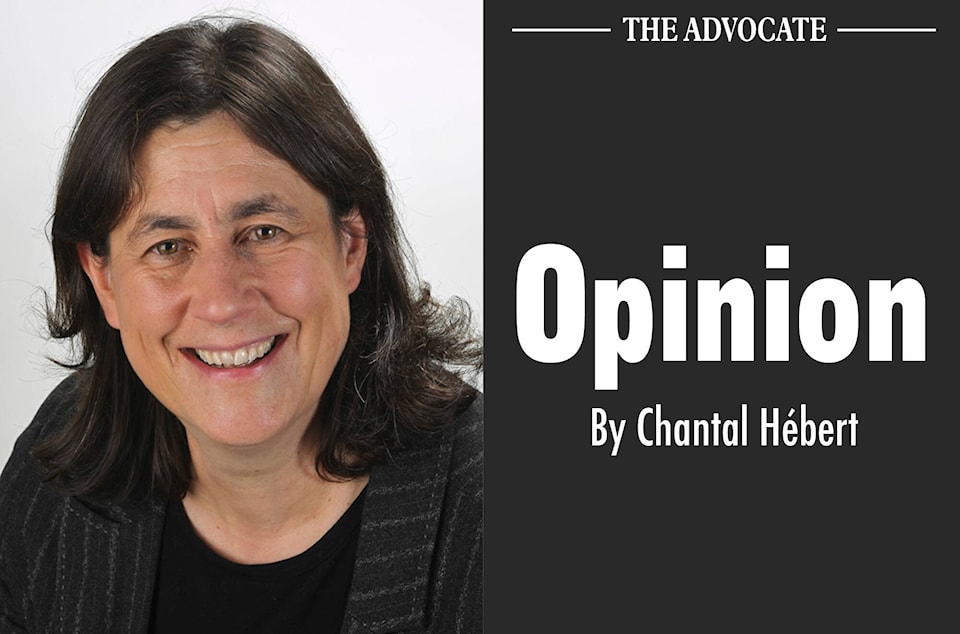With Erin O’Toole gone, the Canadian conservative movement finds itself at a fork in the road. But before choosing a path, Conservative party members will have to determine what destination they have in mind. As is often the case, the path of least resistance may well also be the most likely to lead to a dead end.
Here are a few early takes on the way forward:
There are those within the Conservative caucus who believe the road to success goes through a reconciliation with the People’s Party or at least with its supporters.
Some MPs walked that talk this week when they went out of their way to cosy up with the ragtag mob that has been holding Canada’s capital under siege.
Maxime Bernier’s party may rank last or next to last in federal voting intentions, but it comes first in the hearts of a sizable number of the convoy’s hard-core supporters.
In his early days as Canadian Alliance leader, Stephen Harper started off by bringing back to his caucus the handful of MPs who had bolted to the Tories in protest over Stockwell Day’s leadership.
The two feuding federal conservative clans subsequently came to terms. The reunification of the Canadian right under a single federal roof was an essential step on the way to forming a Conservative government.
But Harper’s overtures to the Tories were never only about putting an end to vote splitting. The move went beyond electoral mathematics. It also served to dispel the widespread notion that the Reform/Alliance party was too extreme to be considered a valid contender for government.
The merger of the Canadian Alliance with the Tories allowed Harper’s party to project a more centrist image and, in the process, attract a critical number of mainstream voters to the blue tent.
A move toward the People’s Party and its supporters would have the opposite effect. It would risk taking the Conservatives even further in the wilderness by making it a less palatable to the moderate voters it needs to win a governing mandate. Some of the voters who would be alienated by such a rapprochement are current Conservative sympathizers.
Among those who were celebrating O’Toole’s demise, there were many who said they wanted to claim their party back.
As it happens, some of the New Democrats who showed Thomas Mulcair the door a few years ago harboured similar feelings. They believed their party had strayed from its roots under Mulcair to become more centrist. They said their top-of-mind goal was to reconnect with those roots.
Six years and two elections later, how well has that worked out?
There is little doubt many New Democrat activists are more comfortable with their party under Jagmeet Singh.
But the NDP has also gone from serious contender for federal power – with significant representation from every region of the country – to fourth place in the House of Commons and less than a handful of MPs east of Ontario.
As for the moral victories that have sustained the federal NDP for most of its existence, they have been few and far between over the past half-dozen years.
If O’Toole’s tenure is going to be remembered for anything, it will be his attempt to drag the Conservative party into the climate-change tent. His acceptance of carbon pricing as an essential tool in any serious climate policy amounted to a timid but essential step toward that objective.
There is undoubtedly a constituency within the Conservative ranks that wants to walk back that step on the way to a change at the top. Last spring, more than half of the party’s convention delegates would not support a resolution that acknowledged the seriousness of the climate crisis. But anyone who believes such a choice will expand rather than shrink the pool of available Conservative supporters has not kept touch with a fast-evolving public opinion.
In contrast with the NDP, the Conservative party has been left a vacuum to fill by Justin Trudeau’s Liberals.
If there is a sweet spot for the party to land in, it is at centre-right, where Red Tories but also scores of Blue Liberals are quietly uncomfortable with the economic direction or lack thereof of the Trudeau government.
Those voters crave a competent, fiscally conservative alternative that is more interested in policy heavy-lifting than in glib, misleading social media hits.
Whether a candidate will materialize to succeed O’Toole who fits that bill is not a given. Nor is it certain that the party’s many factions will manage to look beyond their pet causes on the way to selecting their next leader.
But as they ponder their options, the Conservatives might want to consider, a) that they won’t necessarily have Trudeau to kick around in the next election, and b) that his successor could well bring more impressive economic credentials to the fore than the current prime minister.
Chantal Hébert is a National Affairs writer.
